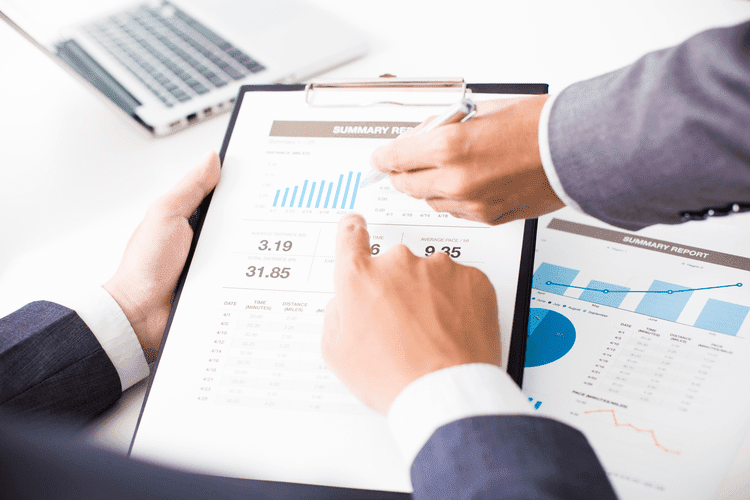Accounts Payable Debit or Credit normal balance

An accrual is an accounting adjustment for items (e.g., revenues, expenses) that have been earned or incurred, but not yet recorded. Accounts payable is a liability to a creditor that denotes when a company owes money for goods or services and is a type of accrual. Accounts Payable is a liability account, and thus its normal balance is a credit.
Accounts payable process steps

Whether the normal balance is in credit or debit, is determined by the accounting equation. This accounting equation is used to determine the normal balance of not only accounts payable but also accounts receivables. And with built-in client check writing, client payroll, accounts payable, and accounts receivable capabilities, you’ll make it easier for clients to keep doing business with your firm. Accounts payable automation also generates an audit trail that can save significant time in the event of an audit. Over the years, accounting software has dramatically reduced the amount of time it takes to journalize and process accounting information. At the end of each reporting period, accountants verify that the total of all accounts payable outstanding matches the payables account balance stated in the general ledger.
Analysis of Accounts Payable Turnover Ratio Formula

Accordingly, the 2/10 net 30 payment term means you can take a 2% discount on the total due amount. Otherwise, you would have to pay the full amount standing against the due invoice by November 9. Accordingly, you are required to pay your supplier latest by November 9. This way, the transactions are organized by the date on which they occurred, providing a clear timeline of the company’s financial activities.
Get a complete view of your finances with QuickBooks accounting software for small businesses
- Likewise, crediting Accounts Receivable by $300,000 means a decrease in the Accounts Receivable by the same amount.
- And by flipping that number around, we can figure out how many days, on average, you take to pay a bill.
- If you wait too long to pay, you may damage your relationship with the vendor.
- For asset accounts, such as Cash and Equipment, debits increase the account and credits decrease the account.
- Acme Manufacturing, for example, has $100,000 in payables from 0 to 30 days old, and $15,000 due in the 31-to-60-days-old category.
Temporary accounts (or nominal accounts) include all of the revenue accounts, expense accounts, the owner’s drawing account, and the income summary account. Generally speaking, the balances in temporary accounts increase throughout the accounting year. At the end of the accounting year the balances will be transferred to the owner’s capital account or to a corporation’s retained earnings account.
- Under the accrual basis of accounting, the Service Revenues account reports the fees earned by a company during the time period indicated in the heading of the income statement.
- One of the fundamental principles in accounting is the concept of a ‘Normal Balance‘.
- This means the company has managed to pay off its bills about 10 times over the course of that year.
- This includes transactions with customers, suppliers, employees, and other businesses.
- Depending on the function performed by the salaried employee, Salaries Expense could be classified as an administrative expense or as a selling expense.
- This means that when invoices are received from suppliers, the accounts payable account is credited, and when payments are made to suppliers, the accounts payable account is debited.
- This figure reflects all outstanding obligations that the company is yet to settle with its creditors.
The five types of accounts and their normal balances

However, too low accounts payable indicates your business is giving up on the benefits of trade credit. Accounts payable management is essential for you as a small business. This is because it ensures that your accounts payable contributes positively towards your business’s cash flows. That is it helps you to minimize late payment costs like interest charges, penalties, etc. Accordingly, accounts payable management is critical for your business to manage its cash flows effectively. In accounting, debits and credits are the fundamental building blocks in a double-entry accounting system.
What is Accounts Payable Turnover?
With an AP Turnover of 10, it works out to be around 36.5 days on average to settle up (365 days ÷ 10). So, on average, the company takes a little over a month to pay off its invoices for that year. Payments to suppliers are the total payments made towards settling Accounts Payable during the period.
Whenever cash is received, the asset account Cash is debited and another account will need to be credited. Since the service was performed at the same time as the cash was received, the revenue account Service Revenues is credited, thus increasing its account balance. The exceptions to this rule are the accounts Sales Returns, Sales Allowances, accounts payable natural balance and Sales Discounts—these accounts have debit balances because they are reductions to sales. Accounts with balances that are the opposite of the normal balance are called contra accounts; hence contra revenue accounts will have debit balances. The credit is the usual version of the normal balance for the accounts payable.
Acme posts a debit to increase the machinery asset account (#3100), and posts a credit to increase accounts payable (#5000). The AP turnover ratio is a short-term measure of liquidity that tracks the rate at which a company settles its accounts payable, reflecting the company’s ability to manage its short-term obligations. The days payable outstanding (DPO) measures the number of days it takes for a company to complete a cash payment post-delivery of the product or service from the supplier or vendor. Therefore, an increase in accounts payable is reflected as an “inflow” of cash on the cash flow statement, while a decrease in accounts payable is shown as an “outflow” of cash.
- Because accounts payable entries are not immediately paid, they are listed as a current liability on a business’ general ledger and balance sheet.
- That means if accounts payable increases overall credit balance also increased.
- Thousands of people have transformed the way they plan their business through our ground-breaking financial forecasting software.
- The $500 debit to office supply expense flows through to the income statement at this point, so the company has recorded the purchase transaction even though cash has not been paid out.
- So for example there are contra expense accounts such as purchase returns, contra revenue accounts such as sales returns and contra asset accounts such as accumulated depreciation.
- On the balance sheet, the accounts payable (A/P) and accounts receivable (A/R) line item are conceptually similar, but the distinction lies in the perspective (or “point of view”).
In other words, the accounts payable turnover ratio signifies the efficiency of your firm in meeting its short-term obligations and making payments to suppliers. This usually happens when the company extends credit to its suppliers; the credit is reported as an expense. The expense shifts the balance of the accounts payable from the credit side to the debit side. If a business uses a credit card, the purchase will be recorded in accounts payable until it is paid off. Purchasing goods and services on credit instead of upfront payments enables a business to benefit from new assets while earning interest on the funds retained in their account. For example, imagine a business buys some new computer software, and 30 days later, gets a $500 invoice for it.

When it comes to accounts payable, adhering to GAAP ensures accuracy, consistency, and transparency in your financial records. When the invoice is paid, the accounts payable balance is decreased. At the beginning of the period, the accounts payable balance was $50 million, but the change in A/P was an increase of $10 million, so the ending balance is $60 million in Year 0. The accounts payable metric, by itself, offers minimal insights into the operating efficiency of a company.

